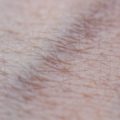Introduction to Laser Hair Removal in the UK
Laser hair removal has quietly revolutionised the way we approach personal grooming here in Britain. From my own experience and countless conversations with friends, it’s clear that this treatment has become more than just a beauty trend—it’s woven into the fabric of modern British life. While waxing and shaving remain popular, there’s something undeniably appealing about the long-lasting smoothness that laser technology promises. The UK’s unique mix of tradition and innovation shapes how we view hair removal: some still value the modesty and subtlety often associated with classic British grooming, while others embrace the confidence that comes from silky, hair-free skin. As someone who has witnessed this shift firsthand, I find it fascinating to see how laser hair removal is now embraced by people from all walks of life, reflecting broader changes in attitudes towards self-care, body positivity, and even sustainability. This growing popularity speaks volumes about our desire for both practicality and aesthetic refinement—a distinctly British blend of pragmatism and personal expression.
2. Historical View: Early Approaches to Hair Removal
Before the advent of laser hair removal, the British approach to unwanted hair was shaped by both cultural ideals and technological limitations. During the Victorian era, body hair—particularly for women—was considered unsightly and even taboo. In these times, beauty standards were strict, and smooth, porcelain-like skin was associated with refinement and femininity. However, options for hair removal were often uncomfortable, time-consuming, and not always effective.
The Victorian Era: Modesty and Home Remedies
In Victorian Britain, modesty was paramount. Beauty routines were conducted in private, with a strong emphasis on discretion. Women resorted to homemade concoctions and tools to remove or lighten visible hair. These methods ranged from simple shaving with straight razors (often borrowed from male relatives) to the use of pumice stones or abrasive powders to rub away hair. Some even experimented with harsh chemical depilatories containing lime or arsenic—a rather risky endeavour that sometimes led to skin irritation or worse. There was a sense of perseverance and creativity in these rituals, reflecting the British spirit of resourcefulness.
20th Century Developments: From Waxing to Electrolysis
By the early to mid-20th century, attitudes began to shift as fashion evolved. The rise of shorter hemlines and sleeveless dresses brought underarm and leg hair into public view. British women increasingly sought more efficient methods for achieving smooth skin. Salons in London and other major cities began offering waxing treatments—imported from continental Europe—and sugaring, a gentler alternative that became popular among those with sensitive skin.
Introduction of Electrolysis
Perhaps the most significant pre-laser innovation was electrolysis, introduced in the UK in the 1920s. This technique used tiny electric currents to destroy individual hair follicles, offering a more permanent solution compared to earlier methods. While effective, electrolysis was a lengthy process—often requiring multiple sessions over months or years—and could be quite uncomfortable.
Comparison of Traditional Methods Prior to Laser Technology
| Method | Era | Efficacy | Comfort Level | Cultural Attitude |
|---|---|---|---|---|
| Shaving/Razors | Victorian – 20th Century | Short-term | Moderate discomfort; risk of cuts | Discrete; common among men, adopted by women in private |
| Pumice Stones/Abrasives | Victorian Era | Variable; often incomplete removal | Irritating; risk of skin damage | Viewed as innovative but laborious |
| Chemical Depilatories | Late Victorian – Early 20th Century | Short-term; varied results | Potentially painful; chemical burns possible | Sought after for convenience despite risks |
| Waxing/Sugaring | Early-Mid 20th Century | Medium-term (weeks) | Painful but tolerable for many | Became fashionable in urban centres |
| Electrolysis | 1920s onwards | Long-term/permanent for treated hairs | Painful; time-intensive process | Regarded as advanced technology; accessible primarily in salons |
This historical journey through British aesthetics reveals not only an evolution in technique but also a deep-rooted desire for self-expression balanced with societal expectations. Each method reflected the era’s unique blend of ingenuity and propriety—a fascinating backdrop for the arrival of modern laser technologies that would soon redefine what was possible in personal grooming across the UK.

3. The Advent of Laser Technology
When laser hair removal first arrived on British shores in the late 1990s, it was greeted with a heady mix of excitement and healthy scepticism—a response that felt uniquely British. Clinics in London and other major cities began offering these futuristic treatments, promising a solution to the age-old hassle of waxing, shaving, and plucking. As I recall my own tentative steps into one of these pioneering clinics, there was a palpable sense of curiosity mingled with caution among clients. British sensibilities—valuing privacy, discretion, and proven results—meant that many sought extensive consultations before committing to this novel procedure.
Regulations quickly came into play as the industry grew. The Care Quality Commission and other regulatory bodies stepped in to ensure clinics met rigorous standards. This regulatory landscape helped foster trust, as did the professionalism expected from practitioners. Word-of-mouth played a significant role; people wanted reassurance from friends or family who had bravely gone first.
The early days were marked by machines that, compared to today’s sleek devices, seemed rather clunky and intimidating. Still, the promise of longer-lasting smoothness enticed those tired of the daily or weekly hair-removal grind. It was not just about vanity—there was something quietly empowering about taking control over one’s appearance in this innovative way. Looking back, it’s clear that the careful blend of regulation, clinical expertise, and a distinctively British appetite for new-but-safe technology shaped how laser hair removal became an accepted part of UK beauty culture.
4. Modern Innovations and Advances
If you’ve ever been curious about the leaps that laser hair removal has taken over the past decade in the UK, you’re not alone. The modern British experience is now defined by a blend of scientific precision and a relentless pursuit of comfort and efficacy. Let’s take a closer look at how cutting-edge technology and uniquely British standards have shaped today’s landscape.
Exploring Breakthrough Laser Technologies
The journey from early, somewhat uncomfortable treatments to today’s gentle yet powerful solutions is genuinely fascinating. Clinics across the UK are investing in state-of-the-art devices designed to suit every skin tone and hair type—a true game changer for those who once felt left out of the conversation. Here’s a quick comparison of some popular technologies:
| Laser Type | Main Benefit | Best For |
|---|---|---|
| Alexandrite | Fast treatment speed | Lighter skin tones |
| Diode | Versatile for all skin types | Wider range of clients |
| Nd:YAG | Safe for darker skin tones | Darker complexions |
Unwavering Focus on Safety Standards
The British approach to laser hair removal places a premium on client safety. Every reputable clinic adheres to rigorous Care Quality Commission (CQC) regulations, with practitioners undergoing continuous professional development and certification. It’s comforting to know that alongside innovation, there’s an uncompromising attention to your wellbeing—something I noticed immediately during my own consultations.
British Innovation Leading the Charge
The UK aesthetic industry isn’t just following trends—it’s setting them. From integrating cooling systems that soothe the skin instantly, to pioneering patch test protocols ensuring personalised care, British clinics are often first adopters of global best practices. This drive for excellence means treatments here are not only effective but also far more comfortable than ever before.
A New Era of Efficacy and Comfort
What truly sets the UK apart is the seamless fusion of clinical expertise with customer-centric design. Treatments are now shorter, recovery times are minimal, and results are impressively consistent across diverse clientele. Whether it’s your first appointment or you’re returning for top-ups, the entire process feels tailored just for you—a testament to how far we’ve come in this exciting evolution.
5. Personal Experiences: Aesthetic Results and Social Shifts
Reflecting on my journey with laser hair removal in the UK, I’ve noticed a remarkable transformation not only in my skin but also in the way I perceive myself. The initial apprehension—wondering if the treatment would work for my skin type or if it might be too painful—mirrored the broader uncertainties many Brits felt about this technology in its early days. However, as clinics became more inclusive and practitioners better trained to treat diverse skin tones and hair types, I found reassurance in knowing that my unique needs were being addressed. The results spoke for themselves: smoother skin, fewer ingrown hairs, and a newfound confidence that subtly changed how I presented myself day to day.
The conversation around body image in Britain has evolved alongside these technological advances. Whereas past generations may have felt pressured by rigid beauty standards, today’s landscape is far more inclusive and dynamic. It’s heartening to see laser hair removal services openly catering to people of all backgrounds—whether you identify as female, male, non-binary or anywhere across the spectrum. This shift is evident in the marketing materials used by leading UK clinics, which now feature models representing a wide array of ethnicities and body types. The message is clear: personal grooming choices are just that—personal—and everyone deserves access to high-quality care tailored to their identity.
What stands out most to me is how laser hair removal has become less about conforming and more about self-expression within British culture. For some, it’s a matter of convenience or comfort; for others, it’s part of affirming their gender identity or challenging inherited ideas about femininity and masculinity. My own experiences at London-based clinics often involved chatting with fellow clients who shared their stories—some seeking liberation from daily shaving, others simply wanting to feel at ease during the city’s occasional heatwaves. These candid exchanges have underscored how our attitudes towards body hair are shifting, reflecting greater acceptance of difference while still embracing individual preferences.
In summary, trying laser hair removal here has connected me with both cutting-edge innovation and an ever-changing social narrative. As British society continues to celebrate diversity and authenticity, aesthetic treatments like laser hair removal are being reframed—not as tools for erasing flaws, but as empowering options for expressing one’s true self. The experience has been transformative on multiple levels, mirroring broader cultural shifts throughout the UK.
6. The Future of Laser Hair Removal in the UK
Looking ahead, the landscape of laser hair removal in the UK is poised for exciting transformation. As scientific advancements continue apace and social attitudes evolve, it’s fascinating to imagine how these forces will shape British preferences around hair removal in years to come. Technology is expected to become ever more sophisticated, with devices that promise quicker sessions, reduced discomfort, and even greater efficacy across all skin tones. Already, research into AI-driven customisation hints at a future where treatments are tailored to an individual’s unique hair type and skin profile—an appealing prospect for those who value both results and comfort.
At the same time, shifting cultural narratives around body hair are influencing demand and expectations. Where once smooth, hair-free skin was seen as a near-universal ideal, there’s now a growing acceptance of personal choice—whether that means embracing natural growth or seeking advanced solutions like laser removal. This newfound openness is empowering individuals across Britain to make decisions based on their own preferences rather than societal pressure.
Environmental consciousness is also shaping the industry’s future. As consumers become increasingly eco-aware, there’s a call for clinics to adopt greener practices—from energy-efficient technology to sustainable aftercare products. This aligns beautifully with broader trends in British wellness culture, where responsibility and luxury go hand-in-hand.
As I reflect on my own journey with laser hair removal, I feel a sense of excitement for what lies ahead—not just for myself, but for anyone seeking a harmonious blend of science, aesthetics, and self-expression. The evolution of laser hair removal is far from over; rather, it’s entering a new era defined by innovation and inclusivity. In this ever-changing environment, British clinics and clients alike are set to benefit from choices that are more personalised, effective, and aligned with contemporary values than ever before.


